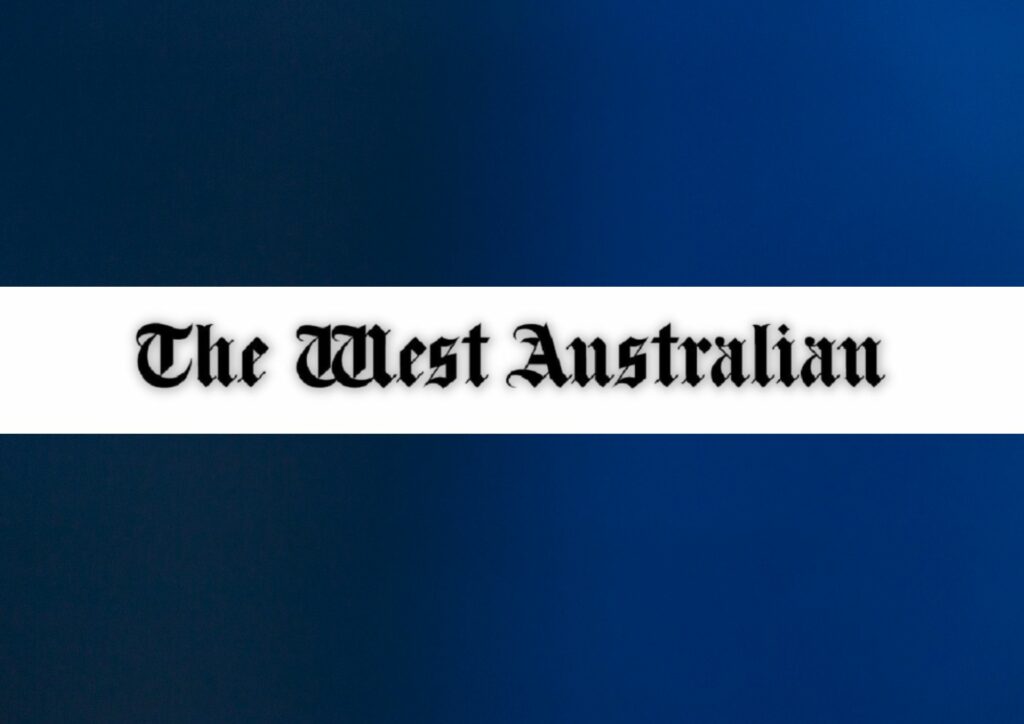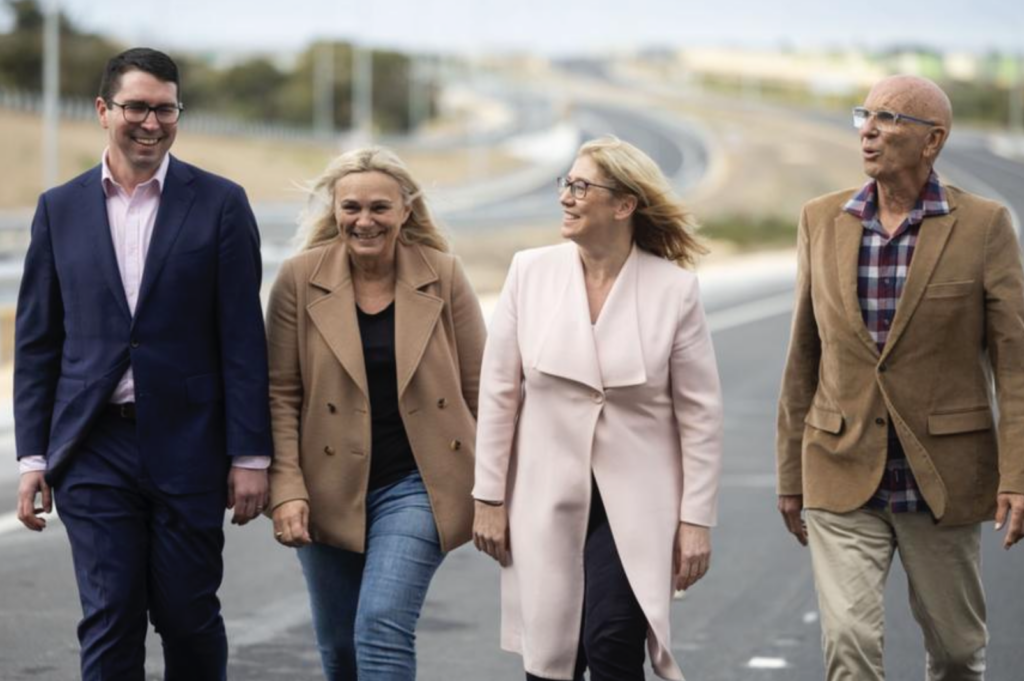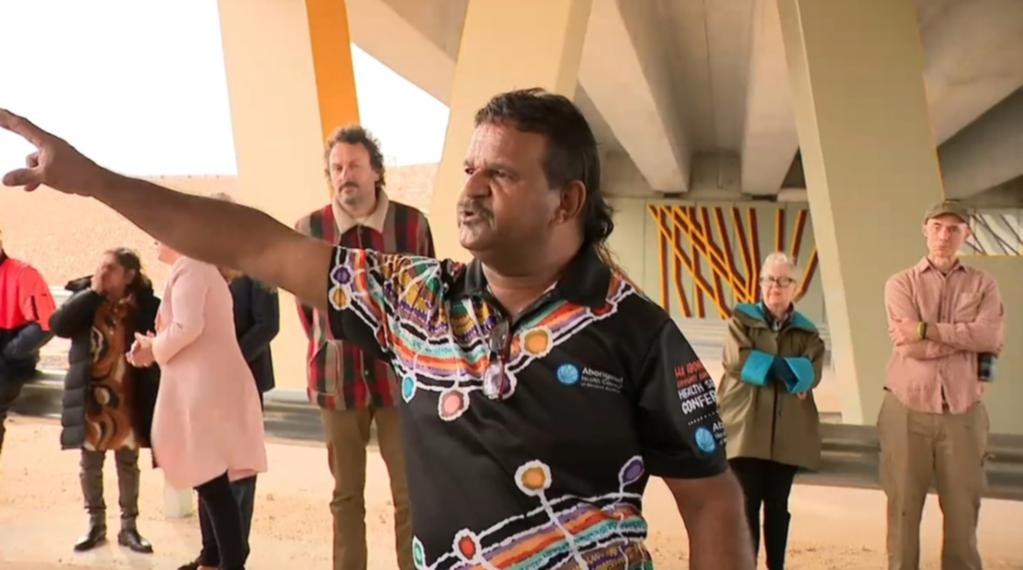

It was like a scene from a Fellini movie.
The setting is a bleak modernist concrete and bitumen tangle intruding into an ancient landscape.
The principal characters are a gaggle of self-satisfied politicians performing a ritual with hardly an elector (certainly not a non-Labor one) in sight.
But now Fellini strikes. Two men are arguing about their conflicting rights to the once-tribal land on which a freeway behind them has been built.
And, watching, one old school news reporter who’s been around long enough to understand the significance of what’s unfolding before him.
On display was the often-farcical nature of modern Australia. Its politics. Its media. Its identity-based social upheaval. And all their conjoined contradictions.
Fellini would have loved it. In fact, he covered some of its themes in his classic film, La Strada (The Road).
In this scene everything is laid bare: the vacuousness of the now-entrenched media “picture opportunity”; the politicians anxious to drain every drop of electoral advantage from each dollar spent of taxpayer funds; the confused reclaiming of Indigenous heritage when direct links to the land are obscured by marriage and miscegenation, broken connections and time.
All of it is set against hundreds of millions of dollars splurged on a road to nowhere. Who needs neorealism when nihilism triumphs.
It is a testament to veteran Channel Seven reporter Geof Parry’s news sense and standing that his report led the bulletin last Sunday night. As television requires, he handled it with sledgehammer subtlety.
The rest of the media reported only the event to which they had been invited — the opening of a road — but not the argument that broke out unscripted, which was the real story.
And that’s just what the pollies and their minders wanted and why they had assembled a selected few in the middle of nowhere, like shags on a rock, without too many “real people” to spoil the occasion.
Parry reported what actually happened. The rest got “content”.
What unfolded was a confrontation between two indigenous men over the stage-managed opening of a 5.6km extension of the Mitchell Freeway from Hester Avenue to Romeo Road at Alkimos, 46km north of the city.
I won’t name them because their public argument revealed family details. But the content of their scrap is central to much of the confusion in the Aboriginal cultural heritage debate raging since a new law to protect it came into effect this month.
The raw footage provided by Seven shows the opening scene. Mr B (who was not in the official party) walks into the group of preening politicians and starts confronting Mr A (the man invited to perform a smoking ceremony) about what is going on.
Throughout the confrontation, the Seven footage shows Quigley with a smile so fixed it looks like rigor mortis has set in.
Often the words in TV reports are a bit evanescent, just washing over us. These are worth studying. The sound quality at first is poor, but it’s obvious that the men don’t know each other because they ask for names.
Mr B: “I don’t need these people coming out here thinking that you fellas can say this, say that on this land. Because we all got a say. But we don’t need you fellas telling us that ‘you gotta do this, you gotta do that’ on this area.”
Mr A: “I don’t need permission off you or anybody else. This is my country too. I am not invading. I am here to share my culture.”
Mr B: “To me it feels like you’re invading my area.”
Mr A: “Why, do I need permission off you?”
Mr B: “No.”
Mr A: “What are you talking about then?”
Mr B: “This is my area. I’ve been out here that long.”
Mr A: “The whole of Whadjuk country is my area.”
Mr B: “What area do you come from?”
Mr A: “Whadjuk.”
Mr B: “You sure this Whadjuk?”
Mr A: “This is Whadjuk. That’s Yued right there (pointing north). My people are Yued as well. My mother is from Yued country.”
For those not familiar with the distinction, Yued is a language group of the Noongar people from an area north of Perth. Native Title Tribunal maps delineate Yued country starting just north of Two Rocks.
But Alkimos is at least 10km south of that boundary, where Whadjuk country runs south to Perth and beyond, extending eastwards to the Ballardong.
But as everyone in the Middle East knows, lines on maps don’t necessarily settle ancient arguments.
Mr B: “I thought you fellas were from Moora. (In the centre of Yued country).”
Mr A: “Well you thought wrong. Mr name is X. That’s Whadjuk. My mother is Y (a famous football family) and she’s from Yued. (He again points to the north).
And this is where some of the many flaws in the Cook Government’s new Aboriginal Cultural Heritage Act were put squarely on show.
Mr B: “Y family is from, what’s that place down there, Bruce Rock.”
Mr A: “No they’re not.”
Mr B: “They are.”
Mr A: “Originally, (X) people lived out at Bruce Rock. My people are from the Yued. I’m a traditional owner here and I don’t care what you say.”
In fact, an oral history from the matriarch of the Y family, available on the South-West Aboriginal Land and Sea Council website, shows she was born in Kellerberrin, near Bruce Rock. Her father was from New Norcia (Yued) and her mother was from Northam (Ballardong).
But back to Fellini, neorealism, La Strada, fascism and “culture” substituting for religion.
An indigenous woman (Ms C), standing next to Attorney-General John Quigley, the local Butler MP, in the concrete space under a freeway overpass tries to placate Mr B.
Ms C: “We can talk about that in a minute. But this has to go ahead. You’re included in this, all right.”
Mr B: “Well it doesn’t seem like it. Nobody told us nothing. Everything is hush-hush.”
Ms C: “Well, we’ve got the Minister here …”
Mr B: “I know John Quigley. His kids and my grandkids go to the same school. What I am saying is you don’t always talk to one mob, you talk to everybody. We’re all in this together.”
Throughout the confrontation, the Seven footage shows Quigley with a smile so fixed it looks like rigor mortis has set in.
Throughout the confrontation, the Seven footage shows Quigley with a smile so fixed it looks like rigor mortis has set in. Credit: supplied/supplied
Throughout the confrontation, the Seven footage shows Quigley with a smile so fixed it looks like rigor mortis has set in.
Deputy Premier Rita Saffioti, Wanneroo MP Sabine Winton and Burns Beach MP Mark Folkard don’t quite know where to look. Federal MP for Perth, Patrick Gorman, as usual, just looks smug.
If one of those sinkholes that plagued Saffioti on the airport rail link opened up and swallowed them all, they surely would have been relieved.
Parry seizes the moment and sidles up to the new Deputy Premier, camera rolling: “What do you make of this Minister?”
Saffioti: “Oh, it’s very interesting. Obviously, there are a lot of Aboriginal groups with history in this area.”
Parry: “Did you pick the wrong one for the smoking ceremony?” Boom.
Saffioti: “I understand that was all handled by the department. Anyway, we’ll get through it.” And she walked off.
But Labor won’t be able to walk away from the mess it has made of this new law. It’s more than just “interesting”.
What those Labor politicians who rammed through the new Aboriginal Cultural Heritage Act had just witnessed was one of the huge blunders in their legislation. Their own work.
Their new law compels landowners to seek out the right person who has the appropriate knowledge to approve any proposed action that might interfere with Indigenous cultural heritage.
But those groups don’t even exist yet. And in cases where Aboriginal people can’t agree among themselves who “speaks for country”, how can anyone else know?
Following Parry’s report last Sunday was a story about claims that another Indigenous elder was stopping a tree planting ceremony in Geraldton, citing cultural heritage. It later transpired the elder had been concerned it was being used to honour Queen Elizabeth II straight after NAIDOC week.
Our politics often plays in the theatre of the absurd and these cultural contretemps were no exception.
As Parry pointed out at the end of his report, the 5.6km strada to Alkimos was delivered for an eye-watering $232 million.
Significantly, he noted there was no funding nor plans to extend the road any further.
So there must be some important landowners around Alkimos — sold as a modern-day Eden by the beach — who will cash in on WA’s massive housing demand, their holdings now better connected to Perth.
But they are unlikely to be Indigenous.
















